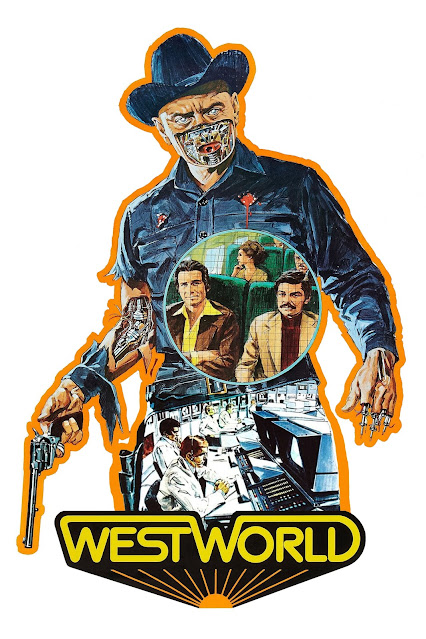Roland Bishop (Tupac Shakur), Quincy "Q" Powell (Omar Epps), Raheem Porter (Khalil Kain), and Eric "Steel" Thurman (Jermaine 'Huggy' Hopkins) are four best friends living in New York City.
They regularly skip school to hang out.
While they think of themselves as a gang, Bishop is more obsessed with gaining ‘juice’ - power and status - on the streets.
When he gets his hands on a gun, Bishop finally has the juice - and he will not let anyone get in his way, even his best friends…
A tight little thriller, Juice is more stripped down than similar movies - Boyz n the Hood and Menace II Society are more concerned with context and backstory. Those films want to tell character stories set in specific locales with systemic critiques.
This film feels a little more like a genre piece, and even makes direct acknowledgement within the text - in an early scene Bishop watches James Cagney in White Heat, setting up his eventual rise and fall.
The characters are set up in medis res, getting ready for the day - very efficient in terms of setting up each character, their personality and family.
Instead of school, they wander the streets getting up to minor scraps.
The movie feels like an overt morality play - these kids are so obsessed with being gangsters that they get destroyed by it.
With a supernatural twist, it could almost be a horror short.
In the lead roles, Omar Epps and Tupac Shakur are terrific, particularly in terms of how they convey so much with their eyes.
The boys never want to come off weak in front of each other, and Epps in particular is great at communicating Q’s growing helplessness.
Initially Bishop is a wildcard obsessed with getting more power. Shakur brings high energy and physicality to these early scenes - it always feels like Bishop is trying to peacock himself into appearing more tough.
When the character gets a gun, it’s like he has found the missing piece he always needed, and Shakur goes smaller. He no longer needs to project.
My favourite example of this shift is when Bishop is cornered on the street by his former bullies, and his friends abandon him.
As Q and Steel walk away, there is a cut to a closeup of Shakur’s face, staring completely dead-eyed out of frame. It is as if he has moved forward in time, past the current threat, and is now focused on vengeance. Terrifying.
Debut director Ernst Dickerson got his start lensing Spike Lee’s early films and John Sayles’ Brother From Another Planet.
Juice looks great but is also very well-directed - my favourite scene in the film is during Raheem’s funeral.
The scene is rich with tension, as Q and Steel are on the look-out for Bishop (Raheem’s killer).
Dickerson has the camera behind Epps as he hugs Raheem’s mother.
As he steps back, Raheem’s mother looks over his shoulder and Bishop is revealed stepping past Q to hug her.
The way it is staged, it initially looks like Shakur is about to attack him.
Making it even better, Shakur does not even acknowledge Epps.
Simply through blocking, Dickerson conveys the mind games Bishop is playing on his former friends.
As Bishop’s campaign of terror escalates, the movie turns into a horror movie during the third act - there is a shot where Bishop emerges from the darkness behind Q like Michael Myers in Halloween.
Dickerson had previous form in creating urban dread - he lensed 1987's Enemy Territory, about an apartment complex of residents trying to escape a vicious gang led by Candyman's Tony Todd.
The ending is a little bit of a letdown - Bishop slips out of Q’s grip and falls off a building. In the original ending, Bishop was supposed to hear the sirens and let go, which feels more appropriate to the character.
While the released version is a wet paper towel, the final shot is haunting - a close up of Epps staring blankly into space while the sounds of his friends echo though his mind.




